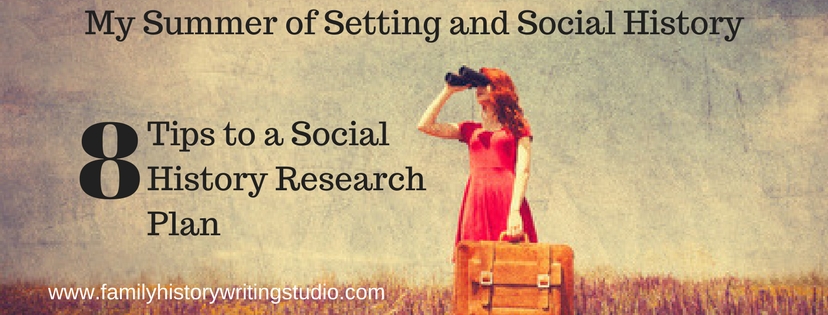An important part of writing our ancestor’s stories is building the world where they lived. Building an authentic world is the key to transporting our readers back in time. It’s not enough to just state the year and the location of your story, you have to show your readers what that world looked like. You can’t assume your reader will know anything about the time period your ancestor lived. They need the writer, you, to build the world, paint the picture, give colour, texture, and emotion to that world so that it comes to life for them and they are transported back in time.
Writers build a world on the page through detail and description and the same holds true for family history writers. Below are six tips you enlist to build the world of your ancestor. A world that emerges from the page so that your reader will not just read about it but travel back in time and experience it.
- Understand the history of the time. It’s important to understand world history, the politics, economics and social conventions of the time. Who was in power at the time? Why? What was the main trade? Marriage laws? You must become very familiar with the time you are writing about. Researching the time period, and all matters related to that time period is extremely important to establishing that world. By referring to the history of the time, perhaps even referring to historical figures you help your reader connect with the time and place.
- Know the local community. It’s not enough to know what was happening in the world, you must have a strong sense of what was happening locally, and understanding the make-up of the community where your ancestor lived. Did they live in a city or a small town? What was the topography of the area? Was the landscape hilly or flat? What was the weather like? Did they experience the four seasons? Was the community close in proximity or distant? Who were their neighbours? What was happening in the local politics? Were your ancestor’s well known in the community or outsiders?
- How were they effected. Once we identified the specific historical events, both world, regional and local to your ancestor’s timeline we have interpret how those events may have effected your ancestor. Is there any correlation between those events and your ancestor’s actions? Don’t just lay on historical information into your story but weave it into the story, into the events and actions of your ancestor’s life. The events should be seen through the lens of your ancestor. How does he or she feel about specific events? Don’t know, perhaps their actions reveal their attitudes?
- Sense it. Make use of your five senses when building your ancestor’s world. Your senses are an important part of bringing the surroundings to life for your readers. The sight of land as the ship arrives to its port, the smell of city, the music playing, the sound of the cars or horses coming down the road, the touch of a wedding dress. The use of your senses make the surroundings come alive for your reader.
- Dress it.Make sure you know what your ancestor is wearing, what undergarments support it, what was considered appropriate or risqué, and what kind of dress would suit your ancestor based on their station in life, their occupation, their religion and their attitudes. You may not necessarily have a picture of your ancestor but dress and grooming of the time can help you piece together an image of your ancestor for your reader.
- Detail it. Details bring a world to life. The more intimate the detail the more believable your ancestor’s world becomes. It’s important just not to list an abundance of detail and to lay it on thick but to choose those details wisely. Instead look for small details that you can weave into the story to show the reader your building an authentic world. What clothes they wore, the food on their plate, the book they were reading. Other details that add authenticity to your narrative include transportation, furniture, medicine, language, etc. We need to go under the surface of the story, to know what life was like in that era and how your ancestor experienced that world.
Where do you find these social and historical details?
- History Books
- Historical Novels
- Local Museums
- Historical Societies
- Local and Social Historians
- Websites
Here at the Family History Writing Studio, we’ve started a resource list of social history links from across the web that can help you in your history and social history research. Click here to check out our list.
We also dedicate a great deal of time discussing how social history can help you know more about your ancestors, in Workbook #2, Authentic Ancestors. Now available on Amazon in paperback.
Authen
or as an e-book.

